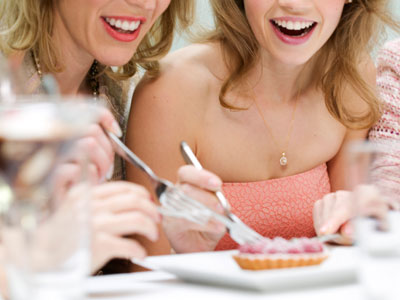How Liquor Can Enhance Dessert
You’ve probably seen the latest round of spirits meant to taste like decedent dessert such as chocolate, cake or creamy caramel. But what about the other way around? Can alcohol make desserts more interesting? Well, it turns out spirits can do quite a few things to enhance your favorite desserts.
Layers of Flavor from Aging

While some spirits like vodka aren’t aged, others are full of flavor due to their aging. In particular, rum, bourbon and brandy work well in dessert recipes because of their inherent, complementary flavors that generally come from the aging process. As explained in a recent Courier-Journal article, bourbon has several flavors that go well with desserts, like nuts, caramel and vanilla notes. This allows bourbon to match well with desserts containing these flavors, as well as complementary flavors such as chocolate.
"In particular, rum, bourbon and brandy work well in dessert recipes because of their inherent, complementary flavors that generally come from the aging process."
Aged rum also goes well with chocolate along with fruit and nuts, according to "The Art and Soul of Baking" by Sur La Table and Cindy Mushet. And Pastry Chef Hedy Goldsmith explains on a Food Network blog post that the brown sugar flavor found in dark rum goes well specifically with pineapple, banana, lychees, coconut, cashews, mint and macadamia nuts.
The same guidelines about matching the flavors of aged spirits applies to ways to pair spirits and cocktails with desserts, too. For example, according to "What to Drink with What You Eat" by Andrew Dornenburg and Karen Page, if your dessert is heavily chocolate-based, rum cocktails, whiskey, cognac and fruit-flavored liqueurs are your best bets for liquor pairings. And the guide gets more specific than that — say you’re eating a coffee-flavored dessert; it recommends pairing a nice cognac cocktail or some hazelnut liqueur. If you want to know how to make enjoying sweets even sweeter, this is a great resource for any drink pairings you’re looking for.
Tasty 'Chemical' Effects
Alcohol, through chemical reactions, can also affect the texture and presentation of your favorite desserts. An article in The New York Times explains how adding alcohol to ice cream lowers the freezing point. What does that do to this classic frozen treat? It makes it freeze less solidly, helping to prevent ice crystals and making the ice cream smoother. However, too much alcohol will keep it from freezing at all. To try it out, the article recommends adding 1 ½ tablespoons of 80-proof alcohol for each quart of ice cream.
Another property of alcohol that makes for some interesting effects results in flaming desserts. According to "On Food and Cooking: The Science and Lore of the Kitchen" by Harold McGee, the food doesn’t burn because "the heat of combustion is fully absorbed by the vaporization of the spirits’ water." This allows for some fantastic presentation for flaming desserts, like this cherries jubilee recipe from the Food Network. As the description states, the flambéing step helps to really bring out flavors and also caramelizes sugars, so the fire has more uses than just dazzling those watching (even though it does that quite well, too!).
So next time you decide to whip up a treat for your friends or bake a cake for a party, think about how the spirits in your cabinet can enhance the flavors, texture or presentation of your dessert. If you work in the spirits industry, pass along these tips to show customers there’s more you can do with liquor than what you might expect.
